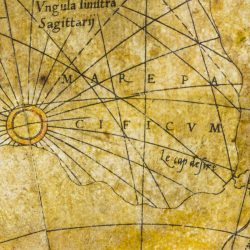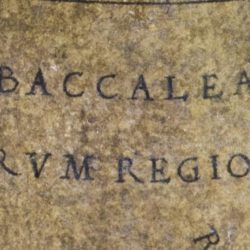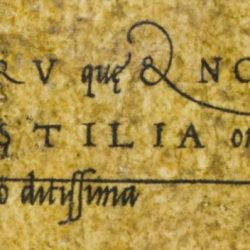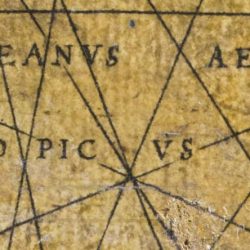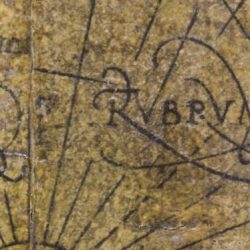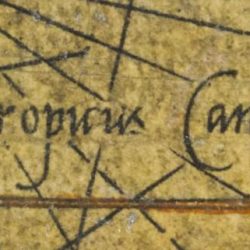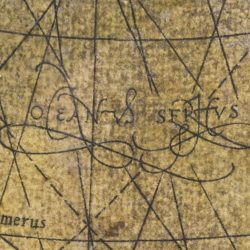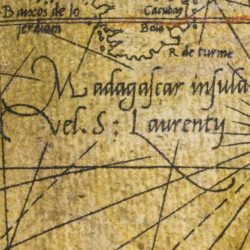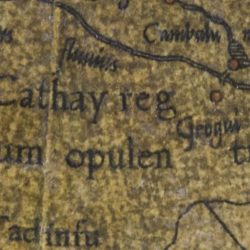New calligraphic convention
Mercator moreover introduced a new calligraphic convention: on his globe he uses capital letters to designate large territories, the Antiqua typeface for place names and cursive Italic script for the constellations and indications of geographic location.Thomas Horst
Seeing that the use of large Gothic characters reduced available space, Gerardus Mercator was the first to do away with them on his globes and maps. He replaced them with cursive Italian script, in which the characters are joined. He also introduced a hierarchy of fonts to denote the type of information being conveyed.
This new calligraphic convention had the dual advantage of elegance and economy of space, making it possible to put more words on a globe. And the ranking of information that it established is still a basic rule in cartography today.
- Cette Cinquième partie, assurément la plus grande pour autant que l’on puisse le conjecturer, s’est ajoutée récemment à notre monde, mais jusqu’à aujourd’hui peu de ses rivages ont été explorés. (S°74 E°109). © UNIL
- Mer pacifique (S°51 W°91). © UNIL
- Région des morues (N°57 W°67). © UNIL
- Pérou (?) et Nouvelle-Castille, de toutes la plus riche par son or (S°9 W°80). © UNIL
- Océan éthiopien (S°13 E°22). © UNIL
- Mer rouge (N°5 E°78). © UNIL
- Tropique du Cancer (N°25 W°128). © UNIL
- Océan sérique (de la soie) (N°45 W°146). © UNIL
- Ile Madagascar ou de Saint-Laurent (S°28 E°67). © UNIL
- Région du Cathay peut-être une des plus riches (N°55 W°160). © UNIL
Find out more
- Literarum latinarum quas italicas cursoriasque vocant, scribendarum ratio : in 1640 Mercator published this book, an initial pamphlet explaining in words and images how to represent so-called cursive (Italic) characters. This practical guide would have a widespread influence on cartography.
- Croiset van Uchelen, T. (1994) « L’écriture et la calligraphie », in : Watelet, M. (éd.) Gérard Mercator cosmographe : le temps et l’espace, Bruxelles, Fonds Mercator Paribas, pp. 150-161.

